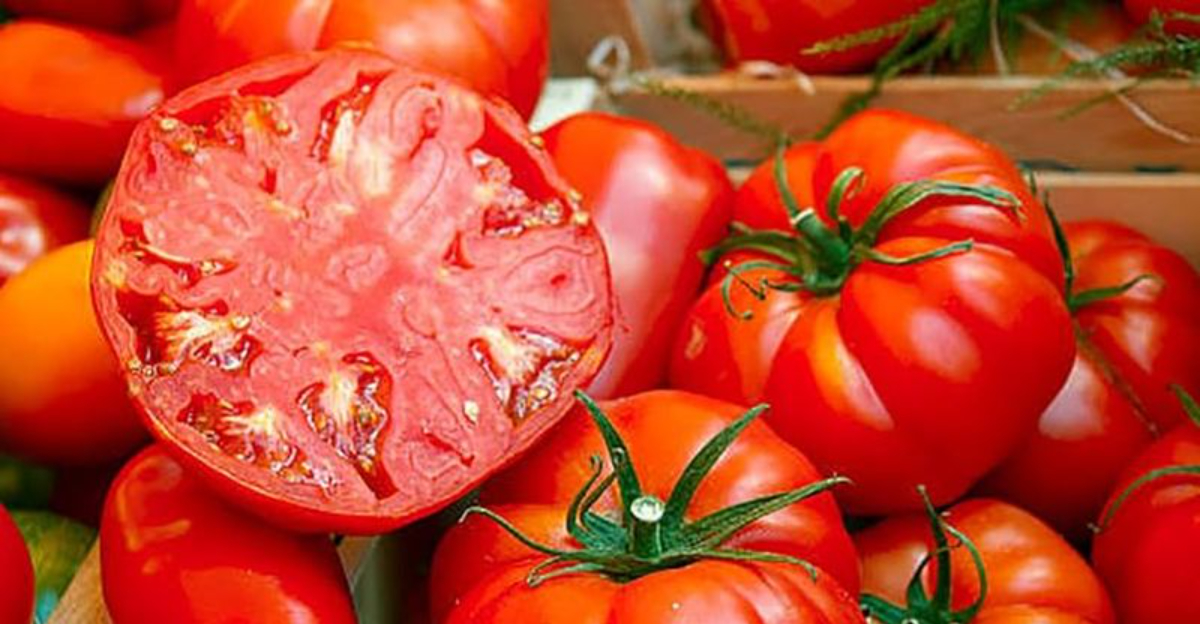The Most Popular Varieties Of Common Veggies

Vegetables are nutritional powerhouses that come in countless varieties, colors, and flavors. From the humble potato to the vibrant bell pepper, these plant-based foods form the foundation of healthy diets worldwide.
Whether you’re a seasoned chef or just starting to explore cooking, knowing these common vegetables can transform your meals and boost your health.
1. Potatoes – The Versatile Underground Staple
Russet Burbank, Yukon Gold, and Papa Criolla potatoes reign supreme in kitchens globally. These starchy tubers adapt to countless cooking methods – baked, mashed, fried, or roasted.
Growing up, my grandfather taught me that a potato’s eyes aren’t for seeing but for sprouting new plants.
This humble vegetable sustained entire populations through history and continues to be the backbone of comfort foods everywhere.
2. Bell Peppers – Rainbow of Sweet Crunch
California Wonder bell peppers showcase nature’s color progression from green to yellow, orange, and finally red as they ripen. Each color offers a different sweetness level and nutritional profile.
These vibrant vegetables contain more vitamin C than oranges. Their hollow centers create perfect vessels for stuffing with rice, meat, or cheese, while their crisp texture adds delightful crunch to salads and stir-fries.
3. Tomatoes – Juicy Fruits Disguised as Vegetables
Roma and Beefsteak ‘Big Boy’ tomatoes technically classify as fruits but culinary tradition places them firmly in vegetable territory. Their juicy flesh and seed-filled chambers bring tangy sweetness to countless dishes.
I still remember my grandmother slicing fresh tomatoes from her garden, sprinkling them with salt, and serving them still warm from the sun. Nothing in the supermarket ever tastes quite the same as those backyard treasures.
4. Onions – Flavorful Foundation Layers
Yellow Sweet Vidalia (a Granex-type onion grown exclusively in Georgia’s Vidalia region) and Red Baron onions form the aromatic base of cuisines worldwide. Their sulfur compounds bring tears to our eyes but incredible depth to our dishes.
These layered bulbs transform magically when caramelized, turning from sharp and pungent to mellow and sweet. Store onions in cool, dry places away from potatoes for maximum shelf life and flavor preservation.
5. Carrots – Crunchy Orange Beta-Carotene Bombs
Imperator ‘Autumn King’ and Rainbow ‘Cosmic Purple’ carrots deliver satisfying crunch and natural sweetness. Their bright colors signal high beta-carotene content, which converts to vitamin A in our bodies.
As a child, I believed eating carrots would help me see in the dark. While that’s somewhat exaggerated, their vitamin A certainly supports eye health.
Modern varieties come in purple, white, and yellow besides the classic orange.
6. Lettuce – Crisp Leafy Foundations
Iceberg ‘Great Lakes’ and Romaine ‘Parris Island Cos’ lettuce provide the refreshing foundation for salads worldwide. These leafy greens offer hydration alongside subtle flavor.
Despite their reputation as nutritional lightweights, lettuce varieties contribute valuable fiber and micronutrients.
Romaine packs more nutrients than iceberg, with greater amounts of vitamins A, K, and folate hidden in its darker green leaves.
7. Broccoli – Miniature Trees of Nutrition
Calabrese ‘Green Sprouting’ broccoli resembles tiny trees with its tight floret clusters atop sturdy stems. This cruciferous powerhouse delivers impressive amounts of vitamin C, fiber, and plant compounds.
Many people discard broccoli stems, but they’re equally nutritious and delicious when peeled. Steam broccoli briefly to preserve its bright green color and nutritional content – overcooking produces that infamous sulfurous smell.
8. Cucumbers – Cool Hydrating Cylinders
English seedless and Pickling ‘Kirby’ cucumbers offer refreshing crunch and high water content. Their mild flavor provides the perfect backdrop for dressings, dips, and seasoning.
I spent countless summer afternoons helping my aunt pickle Kirby cucumbers in her kitchen. The transformation from crisp vegetable to tangy pickle fascinated me.
English cucumbers have thinner, more digestible skin than their traditional counterparts, eliminating the need for peeling.
9. Spinach – Iron-Rich Leafy Superfood
Bloomsdale Savoy spinach features crinkled, dark green leaves packed with iron, calcium, and antioxidants. This versatile leafy green shrinks dramatically when cooked due to its high water content.
Raw spinach contains oxalates that can block some mineral absorption. Lightly cooking helps release more nutrients.
Baby spinach offers milder flavor than mature leaves, making it perfect for salads and smoothies.
10. Sweet Corn – Golden Kernels of Sunshine
Bicolor ‘Peaches and Cream’ and White ‘Silver Queen’ sweet corn deliver bursts of natural sweetness. These summer favorites start converting sugar to starch immediately after harvest.
My family’s annual corn roast featured dozens of freshly picked ears thrown directly on the grill in their husks.
The anticipation of peeling back those charred outer layers to reveal steaming, perfectly cooked kernels remains one of my favorite food memories.
11. Eggplant – Purple Glossy Sponges
Black Beauty globe eggplants feature glossy purple skin covering spongy, absorbent flesh. This nightshade vegetable soaks up flavors and oils, making it perfect for Mediterranean and Asian cuisines.
Salt eggplant slices before cooking to draw out moisture and bitterness. The vegetable’s ability to absorb sauces while maintaining structure makes it ideal for dishes like ratatouille, moussaka, and baba ganoush.
12. Zucchini – Summer Squash Chameleon
Black Beauty zucchini grows prolifically in summer gardens, often producing more than families can consume. This mild-flavored squash adapts to countless preparations from raw to grilled, baked, or spiralized.
I once left town during peak zucchini season and returned to find specimens the size of baseball bats in my garden.
Young, smaller zucchini offer better flavor and texture than overgrown ones, which develop large seeds and watery flesh.
13. Kale – Sturdy Leafy Nutrition Powerhouse
Curly ‘Scotch’ and Lacinato ‘Dinosaur’ kale varieties lead the leafy green revolution with their impressive nutritional profiles. These sturdy leaves stand up to cooking while maintaining structure and nutrients.
Massage raw kale with olive oil and salt to break down its tough fibers for salads. This leafy green contains more vitamin C than oranges and more calcium than milk per calorie, making it a true nutritional superstar.
14. Garlic – Aromatic Flavor Bulbs
Softneck ‘California Early’ and Hardneck ‘Music’ garlic varieties deliver potent flavor and aroma to dishes worldwide. These bulbs separate into cloves, each wrapped in papery skin protecting the flavorful flesh inside.
During a cooking class in Italy, I learned that crushing garlic releases more allicin, the compound responsible for its health benefits and strong flavor.
Roasting whole garlic heads transforms the pungent cloves into sweet, spreadable morsels perfect for bread.
15. Green Beans – Slender Crisp Pods
Snap Bean ‘Blue Lake’ and French Filet ‘Haricot Vert’ green beans deliver satisfying crunch and fresh flavor. These immature bean pods contain tiny developing seeds within their slender green casings.
Look for beans that snap crisply when bent – flexibility indicates age and toughness. The French variety ‘Haricot Vert’ grows thinner and more delicate than standard green beans, requiring less cooking time to achieve tender-crisp perfection.
16. Cabbage – Layered Cruciferous Globes
Green ‘Golden Acre’ and Napa Chinese cabbage offer versatility from raw slaws to fermented kimchi and sauerkraut. These tightly packed leaf heads store well in cool conditions.
My grandmother’s coleslaw recipe, passed down through generations, transforms humble cabbage into a creamy, tangy side dish everyone requests at family gatherings.
Napa cabbage’s more delicate texture and milder flavor make it perfect for quick stir-fries and Asian-inspired dishes.
17. Peas – Sweet Green Spheres
Sugar Snap ‘Sugar Ann’ and Garden ‘Little Marvel’ peas bring springtime sweetness to the vegetable world. These legumes grow in pods, either eaten whole or shelled for their sweet interior spheres.
The satisfying snap when breaking open a fresh pea pod signals peak freshness. Sugar snap varieties combine the best of both worlds – edible pods surrounding sweet peas – eliminating the need for shelling while maximizing flavor and fiber.
18. Radishes – Peppery Colorful Roots
Cherry Belle and Daikon ‘Miyashige’ radishes deliver peppery crunch from opposite ends of the size spectrum. These fast-growing root vegetables bring vibrant color and zesty flavor to salads and slaws.
I planted radishes with my daughter as her first gardening project because they sprout in just days and mature in weeks.
The Cherry Belle’s bright red exterior contrasts beautifully with its crisp white interior, while the Daikon grows long and white like a carrot.
19. Celery – Crunchy Ribbed Stalks
Pascal ‘Utah Tall’ celery provides distinctive crunch and aromatic flavor to soups, stocks, and crudité platters. These fibrous stalks grow in tight bunches around a central heart.
Store celery wrapped in aluminum foil rather than plastic to extend its life in the refrigerator. The leaves contain more flavor than the stalks and make excellent additions to soups and salads, though they’re often discarded unnecessarily.
20. Winter Squash – Sweet Starchy Storage Vegetables
Butternut ‘Waltham’ and Pumpkin ‘Sugar Pie’ winter squash feature hard outer shells protecting sweet, orange flesh perfect for roasting and pureeing. These storage vegetables keep for months in cool, dry conditions.
The annual tradition of carving pumpkins originated from using turnips in Celtic harvest festivals. When immigrants arrived in America, they found pumpkins made better lanterns.
Beyond decoration, Sugar Pie pumpkins deliver superior flavor for pies compared to larger carving varieties.
